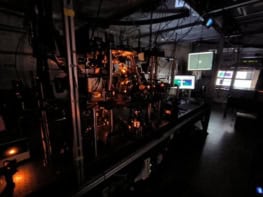French physicists claim to have discovered why it is so difficult to remove objects from `sticky' surfaces. Cyprien Gay and Ludwik Leibler of the CNRS Elf Atochem laboratory in Levallois-Perret have developed a `theory of tackiness' that can explain why it takes 10 000 times more work than predicted by previous theories. They propose that the interplay between surface roughness and air suction determines the 'stickiness' of an object (Phys. Rev. Lett. 82 936).
The French team studied the behaviour of air bubbles on the surface of the sticky polymer film attached to a metal probe. The number and size of the bubbles depends on the surface roughness of the film and probe. They discovered that when the film and the probe are pulled in opposite directions, the air bubbles deform and change shape. This leads to a ‘suction-cup’ effect which strengthens the bond between the probe and the film. However, once air rushes between the film and the probe, the bubbles start to move and join together. Small contact points remain between the film and the probe, until enough force is applied to pull the items completely apart.



